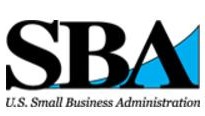Protecting your bank, business or personal accounts from cybercrime seems like common sense. However, with cybercrime costing businesses $600 billion globally, they will need to be proactive to keep their businesses safe.
Cybercriminals target banks first. The average cost of cybercrime for financial services companies globally has jumped by 40 percent over the past three years, from $12.97 million per firm in 2014 to $18.8 million in 2017.
Financial services firms deal with cyberattacks 300 times more frequently than businesses in other industries. Almost two-thirds of financial services companies’ security costs are spent on containment and detection of cyberbreaches.
So how do banks and other financial services companies cope with such an ominous enemy?
“We’re always thinking about how someone could take advantage of our customers, or our system, and how to improve them,” Gregg Vaillancourt, vice president and senior payments & solutions adviser of KeyBank’s Enterprise, Commercial Payment and Treasury Services Group, told Banker & Tradesman.
Vaillancourt said banks are always in the business of being proactive, and that means not only creating a “fool-proof system” that protects from cyberattacks, but also educating the bank’s consumers.
“At every bank I’ve worked for, fraud has become more and more of a concern. And it’s something we need to educate our customers and businesses about. Not all FDIC insurances cover cybercrimes,” he said.
Where cybercrime endangers banks the most is not with banks employees, but rather with their customers.
“I can’t stop that guy from hitting a link in their email and downloading malware on their computer,” Vaillancourt said. “As far as a bank is concerned, we give you securities within the bank to protect your account, but if someone steals that person’s credentials, the bank wouldn’t know until it’s reported.”
Vaillancourt said the biggest and best way to prevent cybercrime is to go digital; but it’s a “double-edged sword.”
“We’re trying to get rid of paper,” he said. “Every time a customer is sending out a paper check, they’re handing their account number, routing number and everything the bad guy would need to take advantage of them.”
Banking online, such as DCH of bill pay, is faster, safer and more efficient, he said. If the money goes through encrypted bank systems, it goes through significantly fewer hands.
Vaillancourt said that people don’t use paper checks much anymore, making it harder for banks to ‘red flag’ checks as they process online automatically.
Though banking electronically is the safest way to bank, he said, there are still many drawbacks that make protecting consumer information on all platforms difficult.
“Most criminals go through a customer’s social media and email to get into their account,” Vaillancourt said. “We all know it’s important to keep our social security number to ourselves, but now it’s just as important not to give anyone your Facebook password.”
October is National Cybersecurity Awareness Month for 15 years running, bringing banks and the public a much-needed reminder that cybercrime is a real threat. As the month comes to a close, Vaillancourt said “it’s in our best interest to educate consumers and help them protect themselves, and in that sense, they’re protecting the bank as well.”




 |
| 

